Results 5,641 to 5,650 of 12096
Thread: Anandtech News
-
01-13-16, 07:27 AM #5641
Anandtech: Seagate Unveils 10 TB Helium-Filled Hard Disk Drive for Cloud Datacenters
Seagate Technology on Wednesday introduced its first helium-filled hard disk drive. The novelty is designed for cloud datacenters that require maximum amount of storage and enhanced reliability. By filling its HDDs with helium, Seagate can substantially increase their capacity and lower power consumption while using current magnetic recording technologies. At present, two major customers of the company are already evaluating the new hard drives. Volume shipments of the HDDs will start later.
The helium-filled Seagate Enterprise Capacity 3.5-inch HDD with 10 TB capacity incorporates seven perpendicular magnetic recording (PMR) platters with 1.43 TB capacity each as well as 14 heads. The manufacturer claims that the new drive features an advanced caching sub-system to increase performance. In addition, the new helium-filled Enterprise Capacity 3.5 HDD sports the company’s PowerChoice technology, which helps to manage power consumption during idle time, as well as PowerBalance technology, which enables operators of datacenters to balance power consumption and IOPS (input/output operations per second) performance of hard drives. Seagate claims 2.5 million MTBF for its helium-filled HDD, which is significantly higher compared to traditional enterprise-class drives.
Typically, Seagate’s Enterprise Capacity HDDs feature 7200 revolutions per minute (RPM) spindle speed as well as special top and bottom attached motors (in a bid to reduce vibration), but the manufacturer did not confirm such details about its 10 TB helium-filled hard disk drive. Since hermetically sealed HDDs feature significantly different internal architecture, many actual specs of the Seagate Enterprise Capacity 10 TB may differ from predecessors.
The new hermetically sealed helium-filled hard drives from Seagate use either Serial ATA-6 Gb/s or SAS-12 Gb/s interfaces and can be installed into various environments. The manufacturer did not reveal sector sizes of the new HDDs, but typically modern high-capacity hard drives have 4 KB sectors and can support 512-byte sectors via emulation. Typically, enterprise-class hard drives also optionally support data security features, such as self-encryption, secure erase and so on. Unfortunately, Seagate did not reveal exact feature-set of the helium-filled 10 TB HDDs, possibly because customers are only evaluating them at the moment and commercial drives may be different from today’s.
The density of helium is one-seventh that of air, which reduces drag force acting on the spinning disk stack and lowers fluid flow forces affecting the disks and the heads. By filling hard drives with helium, makers of HDDs can install up to seven platters into one industry-standard 3.5/1-inch hard drive, reduce power consumption of HDD motors and improve accuracy of arm’s positioning. All three benefits are crucial for modern datacenters.
By expanding capacity of its top-of-the-range Enterprise Capacity 3.5-inch HDD to 10 TB (up from 8 TB, or by 25%), Seagate increases capacity per rack to 2400 TB (up from 1920 TB), which significantly bolsters storage density in a datacenter while decreasing power consumption per terabyte. For datacenter owners such changes reduce total cost of ownership (TCO) and help to maximize their storage capabilities without expanding area of their facilities.
Seagate said last year that it had experimented with helium-filled hard disk drives for about 12 years. While the company is several generations behind HGST with its hermetically sealed commercial HDDs, the company’s helium platform should be rather robust in terms of both reliability and performance.
At present, Alibaba and Huawei, who both said that the new hard drives help them to reduce their costs, evaluate Seagate’s Enterprise Capacity 10 TB HDDs. Some other companies have also received Seagae's new HDDs. HGST’s 10 TB helium-filled hard disk drives are already deployed by companies like Netflix, which need maximum amount of storage.
Seagate itself predicted recently that in 2016 its 8 TB hard drives would be its most popular high-capacity models. The company did not announce high-volume availability timeframe of its 10 TB HDDs, but it is unlikely that Seagate will ship a lot of such products this year. Pricing of Seagate’s Enterprise Capacity 10 TB HDD is unknown.
Mobile devices, Big Data analytics, 4K ultra-high-definition video, modern workloads and emerging devices generate tremendous amounts of data, which greatly increases storage requirements for datacenters. Since technologies like two-dimensional magnetic recording (TDMR) and heat-assisted magnetic recording (HAMR) are not ready for commercial hard drives just not, helium-filled HDDs will gradually gain importance for companies like Alibaba or Netflix. So far, HGST has shipped over four million helium-filled hard drives and in in the recent quarters adoption of such HDDs intensified among its customers.
More...
-
01-13-16, 08:23 AM #5642
Anandtech: The Rosewill Quark Series Power Supply Review (750W, 850W, 1000W, 1200W)
Today we are having a look at the Quark PSU series from Rosewill. Rosewill is a North American manufacturer, most commonly known as being Newegg's in-house brand. Rosewill is also a company that is usually trying to compete by outpricing the competition, offering low cost and mainstream products at lower prices. The Quark series however is not meant for the average user, but for enthusiasts that are shopping for a high quality and performance PSU, suggesting that Rosewill is not afraid to compete against the cream of the market.
More...
-
01-13-16, 09:17 AM #5643
Anandtech: CES 2016: The Race to Skylake Xeon Motherboards at GIGABYTE
I have been relatively tight lipped on the swathe of Xeon focused motherboards recently making headlines, for good reason. Back at the launch of Intel’s latest generation of processors in August, codenamed Skylake, we had heard that this generation would deviate on the norm when splitting consumer and professional parts. Previously it was possible to run a professional Intel CPU, a Xeon, in a consumer motherboard that used a mainstream chipset – this allowed users to pick and choose if they wanted that Xeon (due to pricing or other factors) but also with features only found on consumer motherboards. With Skylake, Intel said this would change. While consumer processors would work in both consumer and professional motherboards, the professional Xeon processor line would be locked to professional-grade motherboards only.
This change has meant that the major motherboard manufacturers are scrambling to launch a set of professional grade motherboards, and specifically the C232 and C236 chipsets which mirror the H150 and Z170 chipsets for consumer. This has been further compounded with the revelation regarding non-K series overclocking, and whether this should be a feature for Xeon CPUs. These C232/C236 motherboards will be unlike the ones that have come before in this segment, and feature more consumer oriented features for audio, storage, networking, USB 3.1, power delivery and even overclocking in the BIOS where possible.
The GIGABYTE line on display at CES is essentially this. There were at least six models on display, and were easily spotted by the naming scheme (using X170, or X for Xeon) and the camouflage aesthetic with consumer features such as the PCIe guards.
Here the X170-Gaming 3 WS (that’s WS for Workstation) is built on the C236 chipset, with both SLI and CrossFire certification similar to a Z170 motherboard. If you add in the Killer E2200 chip, upgraded audio, USB 3.1 support via USB Type-C and PCIe Gen3 x4 M.2 slots, this is essentially a regular line gaming motherboard with just the chipset changed.
Interestingly enough, not many were advertised directly with ECC support when paired with Xeons. On the far left is the X170-Gaming 7 WS and one next to it is the X170-Extreme ECC, which both look like they should be the high end models with plenty of upgraded power phases, upgraded heatsinks and the other features we see on consumer motherboards.
The ECC model here gives both USB 3.1-C via Intel’s Alpine Ridge controller, which could indicate Thunderbolt 3 validation in future (wait for an announcement), as well as HDMI 2.0 support via the MDCP LSPCON that other GIGABYTE models have. Combine it with the E2400 and Creative solution, and it again seems to sync up with the consumer motherboard line.
Anything on the X150 line from GIGABYTE is using the C232 chipset (which is practically the H150), and is meant to be on the lower price part of the spectrum. Alongside this X150-PLUS WS was a micro-ATX variant of the same motherboard, and the X150M-PRO WS as well.
From my perspective, the demand for Xeons from casual end-users is difficult to grasp. I have known for a while that there are a core bunch of end users that will go out and buy the E3 1230 line of Xeons because they can get good pricing over a similar Core based part, or there are users that will swear that the Xeons are better binned, offering lower power consumption. But determining just how big that market it is difficult, even when thinking about end-users and system integrators and if Intel/retailers even decide to sell Xeons to end users as OEM labelled parts. You can still use a Core processor in a C232/C236 motherboard anyway, so these motherboards are more aimed at Xeon prosumers and SMB environments that are not big companies with contracts in play.
Gallery: CES 2016: The Race to Skylake Xeon Motherboards at GIGABYTE





More...
-
01-13-16, 12:34 PM #5644
Anandtech: CES 2016: Deepcool’s Genome is a Water Cooling Equipped Case with a Helix
We’ve dealt with closed loop liquid coolers for computer processors for the best part of five years now, and there are users different sides of the fence regarding their utility, ease-of-use or performance. There are chassis being designed with these CLLCs in mind, such that users have enough space to cool multiple CPUs or GPUs with plenty of mounting points. Deepcool, via their brand Gamer Storm, had a case on display designed to fit their specific cooler which aims more towards the aesthetic of the boring black CLLCs we have had up to this point.
The cooler has an additional stage compared to other CLLCs, with a combination waterblock/pump, a triple 120mm radiator and then a helix shaped reservoir. The whole arrangement is designed to fit only in the Genome chassis, with the helix proudly on display on the outside, and the top of the chassis designed to accommodate the radiator.
For example here we have the white Genome chassis with a limited edition ASUS Z97 Mark S motherboard (read our review here) and white Avexir DRAM specifically built for the motherboard. I pointed out to Deepcool that here the CPU block and pipes should be white as well, to which they produced a model with that in mind but it wasn’t ready to be installed. The CPU block/pump has a design which splits them into semi-modular parts that allows Deepcool’s design team to avoid patent issues and produce new models in the future which can be an upgrade of one or the other.
I was told by Deepcool that the block has a variety of mounting mechanisms for all the major sockets, but they are currently working on an updated version to make it easier.
The chassis itself is an ATX case with a special area at the front of the case to give more room for cable routing but also for airflow. There is a bracket that can be removed for super long GPUs, and due to the design SSDs and HDDs are mounted at the bottom with the power supply.
I tell you what, the design is simple and effective. I have seen this sort of helix reservoir before so Deepcool is not unique in this, but the cooler and chassis is designed to be sold as a set in various color combinations yet to be decided. The price at retail for both should be around the $250 mark, which really puts $150-$180 in the triple-radiator cooler (with fans) and $70-$100 in the case.
Gallery: CES 2016: Deepcool’s Genome is a Water Cooling Equipped Case with a Helix Reservoir





More...
-
01-13-16, 03:39 PM #5645
Anandtech: CES 2016: MSI’s Golden Idea for Motherboards
The problem with a gold motherboard color is that it often looks too much like copper, and several companies have tried it in recent years (ASUS on Z77, ECS’ Golden Series) with limited success. Back during Z77 launch, one group of users seems to not like the scheme, or couldn’t found a combination that works. There is the old gold themed specialist modded PC that looks good, but I’ll be honest and say I have not seen that many in general when red and black themes tend to win out. I have heard proponents of gold components suggest that the color scheme works in certain markets, such as China and the Middle East, but until I see those numbers I’d take it with a grain of salt.
Nonetheless, for Skylake, MSI has you covered.
As part of the Gaming range, this model is aimed at the H150/B150 crowd more than the high end, and while I have heard remarks that it looks like the brown PCBs of old, that is actually a gold colored PCB that seems to have glitter embedded in it. The booth lighting didn’t help capture the effect properly, but I wonder if this isn’t part of a bigger idea.
MSI has been playing around with color schemes for a while, such as the ECO and the Krait series of motherboards which are both separate from the regular Gaming line or something like the OC Certified line. It is only going to be a matter of time before we try all colors, but it makes me wonder if this model was done at the request of a regional SI who wanted a few thousand units for their customers as part of a custom order. I have seen other motherboard companies put custom product runs into the mainstream before, and this might be the case here.
No word on regional release or pricing as of yet. I’m not sold on the color scheme straight away, and the glittery effect made me think about putting it in pink and slapping a Hello Kitty logo on it. I would be interested in seeing the scope of the sales though, especially where and to which retailers/system integrators.
More...
-
01-14-16, 12:37 AM #5646
Anandtech: Conexant Announces New Audio Processing Solutions At CES
At CES, Conexant gave me a demo of some of the audio processing technology that they've been working on. Conexant is a company that probably has their technology in a product you own without you knowing it, and they focus a lot on SoCs for doing audio processing in everything from TVs, to smartphones, to IoT devices.
One of the most interesting demos shown by Conexant is of their 4 microphone voice system to provide 360 degree direction detection. The company's CX20924 DSP enables this, and in their demo it worked quite well regardless of the angle you were at, and it even worked properly with multiple users speaking at the same time. While many devices can do this kind of detection, they often require arrays with 6-8 microphones, which can be cost prohibitive. Conexant claims that the system can work at a range of up to five meters, and it's able to tune out background noise in order to properly interpret your voice. This system could be used to drive down the cost of voice-activated devices by reducing the amount of hardware needed, and in my mind I can think of products like the Amazon Echo being brought to lower price points without sacrificing functionality.
The second major announcement from Conexant is their CX20926 audio and sensor SoC. The chip consists of a Cortex M0+, along with Conexant's own audio DSP for voice processing. This chip is aimed at IoT applications and other battery powered devices like smartphones where a vendor is looking to implement always-on voice detection with minimal idle power consumption.
The last announcement from Conexant is their RoomAware Optimizer sound processing for televisions. This feature has been included on LG's 2016 OLED and QD TVs, under the name Magic Sound Tuning. The technology uses microphones to analyze the acoustic characteristics of the room in order to tune the sound produced by the TV's speakers. While I wasn't able to get a demo of this feature, the fact that Conexant has already gotten adoption from LG shows that there's clearly interest in this type of tech from manufacturers and consumers.
More...
-
01-14-16, 06:02 AM #5647
Anandtech: Samsung Announces 14LPP Mass Production
Today Samsung Semiconductors officialy announces mass production for its second generation 14nm FinFET manufacturing node. Early last year we saw Samsung announce mass production of its first generation FinFET process that was used in the Exynos 7420 which powered last year's flagships from Samsung Mobile and Meizu.
"We are pleased to start production of our industry-leading, 2nd generation 14nm FinFET process technology that delivers the highest level of performance and power efficiency” said Charlie Bae, Executive Vice President of Sales & Marketing, System LSI Business, Samsung Electronics. "Samsung will continue to offer derivative processes of its advanced 14nm FinFET technology to maintain our technology leadership."
The second generation process called 14LPP (Low-Power Plus) is advertised as bringing performance as well as power improvements over the 14LPE (Low-Power Early) predecessor. The new node is described as being able to increase switching speed of up to 15% and decreasing power consumption by up to 15%.
The improvements are made possible via transistor structure changes and process optimizations, for example we see usage of a taller fin height compared to that of 14LPE. Samsung has also improved silicon straining and describes usage of fully-depleted FinFET transistors being able to bring enhanced manufacturing capabilities.
The 14LPP process is confirmed to be used in Samsung LSI's own Exynos 8890 as well as Qualcomm's Snapdragon 820 SoCs, which we should be seeing more of in devices coming in the next months. As GlobalFoundries licenses Samsung's process node as we should also see CPU and GPU products from AMD produced on the new manufacturing node.
More...
-
01-14-16, 06:02 AM #5648
Anandtech: Compulab Rolls-Out Passively-Cooled Airtop Systems
Compulab, a maker of miniature and small form-factor computers, is introducing its first desktop system called Airtop today. The new computer can be equipped with rather high-performance components, but is completely fanless and only uses the company’s proprietary natural air-flow (NAF) cooling technology.
Compulab’s Airtop is a compact 7.5-liter desktop system that can dissipate up to 200W of heat using only passive cooling methods. The Airtop utilizes various industry-standard components and can be configured as a gaming PC, a server or a workstation. The system is based on a proprietary motherboard featuring Intel’s C226 platform controller hub (PCH) designed specifically for the Airtop with NAF cooling. The mainboard places CPU socket, DIMM slots, PCI Express x16 slot and other components in a way to enable the most efficient dissipation of heat. To eliminate hot components from the case, the Airtop uses an external PSU with a mini-DIN connector.
The proprietary Airtop mainboard is compatible with Intel Core i7 and Intel Xeon E3 v4 microprocessors based on Intel’s Haswell or Broadwell micro-architectures (LGA1150 packaging) as well as various graphics cards, including NVIDIA’s GeForce GTX 950 and Quadro M4000.
The Airtop can be equipped with up to 32 GB of DDR3-1866 memory, four 2.5-inch Serial ATA HDDs/SSDs, one M.2 solid-state drive and one mSATA solid-state drive. The system features two Gigabit Ethernet network controllers (four more may be added using an extension card), a 802.11ac Wi-Fi card with two SIM card sockets, four SMA antennas, four USB 3.0 ports on rear panel, six USB 2.0 ports in total, three RS232 ports, multi-channel audio and so on. While the system utilizes its own mainboard, all the other components are industry-standard and can be upgraded when and if needed.
The NAF heat-exchange system uses two special side-panels, each of which can dissipate up to 100W of heat. The side-panels are equipped with traditional flat copper heat-pipe arrays (with micro-channels) that take away heat from the hottest components (i.e., the CPU and the GPU) and spread it across the side-panel. The heat from the heat-pipe arrays is removed by the special air-tube panels consisting of 14 tubes with air inside. Once the air gets hot, it starts to rise up, removing heat from the side panels (see Compulab's video for details). Everything happens naturally (via convection) and completely silently. The air tubes are open on both ends and efficiency of convection depends on the movement of air through them. For efficient cooling, owners of Compulab’s Airtop will have to ensure that the tubes are not clogged with dust, which is common in industrial and other environments.
While Compulab’s Airtop is in many ways unique, it reminds us of Zalman’s TNN 500 and TNN 300 fanless cases released about a decade ago. Those cases were considerably bigger and acted like giant heatsinks with a lot of heat-pipes inside, but they combined the same cooling techniques as the Airtop.
Compulab claims that it took years to develop the NAF heat-exchange technology and three years to design the Airtop system. Right now, the desktop is only compatible with previous-generation Intel microprocessors and does not support modern technologies like NVMe or USB 3.1, but eventually the company could develop a more advanced motherboard for the latest-generation Skylake and the upcoming Kaby Lake chips in LGA1151 packaging.
The Airtop is relatively small, its dimensions are 10 cm (w) x 30 cm (h) x 25.5 cm (d) – 4” (w) x 12” (h) x 10” (d). The weight of the PC depends on configuration and can be between 4 and 7 kilograms.
The Compulab Airtop is available as a pre-configured system or as a barebone SFF PC for DIY enthusiasts. Since the system is unique and uses numerous components designed specifically for the Airtop, it naturally is not affordable. The Airtop barebone costs $1128, the Airtop-S passively-cooled server (featuring the Intel Xeon E3-1285L v4 CPU) starts at $1810, the Airtop-G gaming PC (with the Intel Core i7-5775C and the NVIDIA GeForce GTX 950 graphics card) is priced at $1968, whereas the Airtop-W workstation (with Intel’s Xeon E3-1285L v4 chip and NVIDIA’s Quadro M4000 graphics adapter) costs $2999. The systems will be available in Q1 2016.
More...
-
01-14-16, 07:07 AM #5649
Anandtech: The Intel Compute Stick (Cherry Trail) Review
The success of ultra-compact form factor (UCFF) PCs have made vendors realize that small and power-efficient computing platforms are here to stay. ARM SoC manufacturers, finding that the tablet market had reached practical saturation, kick-started a new product category in the form of 'HDMI sticks'. As a computing platform, they were smaller than the ultra-compact form factor PCs and looked like an oversized USB key. Intel joined the game in CES 2015 with the Bay Trail Compute Stick. The first iteration was, to put it kindly, a bit underwhelming. However, Intel showed its commitment to the form factor by announcing three new Compute Stick models at CES 2016. They included one Cherry Trail (Atom) and two Core M models, all aiming in that 2-4.5 watt SoC space. The Intel Compute Stick we are reviewing today is the Cherry Trail model that comes with Windows 10 Home (32-bit) pre-installed, making it ready to roll right out of the box. Read on for a performance review and our thoughts on the product.
More...
-
01-14-16, 08:33 AM #5650
Anandtech: CES 2016: MSI’s 27-inch 4K Gaming AIO with Full Sized Discrete GPU, the 27
Back at Computex in 2015 we saw and reported on MSI’s first design ideas surrounding an all-in-one computer (where the PC is essentially in the frame of the monitor and not a separate ‘machine’) with a discrete GPU attached. At that time, it was more a proof of concept – they housed a mini-ITX system in the monitor chassis using a custom PCB and heatsink arrangement, and then extended the PCIe 3.0 x16 connection out to a bay on the back of the monitor that housed a discrete graphics card. This is more basic that something like Thunderbolt where you have to worry about hotplug, but you get a full PC in a monitor. This year at CES we saw the concept in the final stages of design, and spoke to the key product managers behind this new 27XT 6QE model.
The unit on display was a H170 system with a Core i7-6700 processor, with support up to 64GB of DDR4-2133 using SO-DIMMs and graphics card support up to a GTX 980 Ti 6GB or Titan X 12GB – the graphics card requiring an external power brick that comes with the machine. The LCD panel will come in two forms – either 1920x1080 at 144 Hz, or 4K, featuring anti-flicker and subdued blue-light functionality with 10-point touch on some models. The system can house two PCIe M.2 SSDs in RAID as well as a full 3.5-inch drive.
It is the design ID though which stands out. The clear plastic stand attached the VESA mount is sturdy, although does not allow much room for tilt/pitch/rotate. This is because the monitor is actually elongated at the bottom to accommodate the hardware inside – but MSI uses this extension to their advantage with the design, which means the system would look odd at 90 degrees. The rear housing for the GPU is in typical MSI Gaming style, mirroring the design patterns of their SLI bridges. The AIO supports alternative inputs or DP outputs to other monitors, in case you want to run another monitor alongside. I assume these are routed from the GPU for extending the display, with the inputs from other sources being handled by the monitor.
Pricing was not given, although put together a 27-inch 4K or FHD 144Hz with an i7-6700 and a GTX 980 Ti and we are approaching $2000 quite easy. MSI did not say if they will sell certain configurations at retailers, or if users will be able to configure, or if it will be sold as a barebones. I would imagine that system integrators could speak to MSI to create custom designs around it.
Gallery: CES 2016: MSI’s 27-inch 4K Gaming AIO with Discrete GPU, the 27XT 6QE, Update from Computex




More...
Thread Information
Users Browsing this Thread
There are currently 13 users browsing this thread. (0 members and 13 guests)




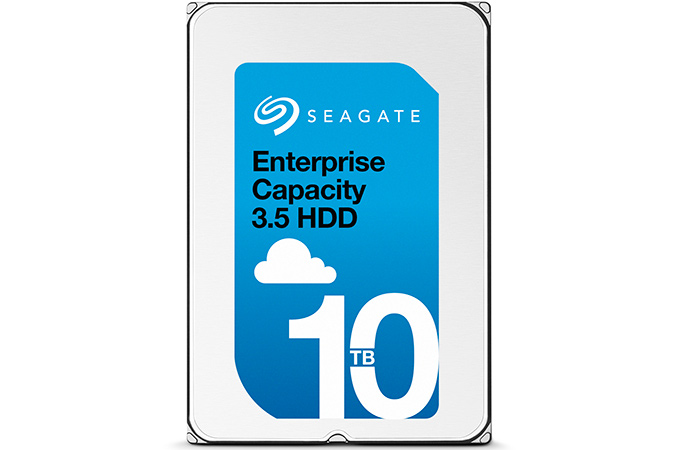
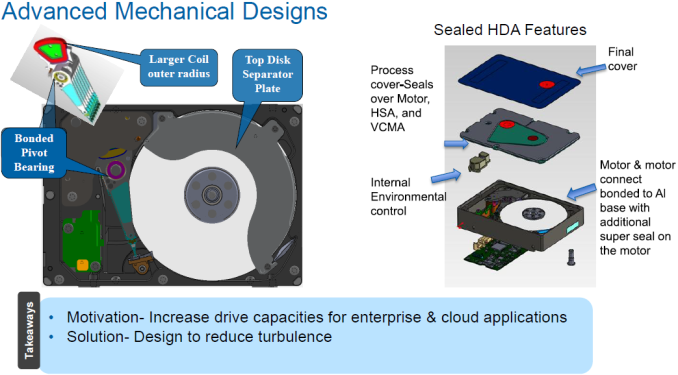
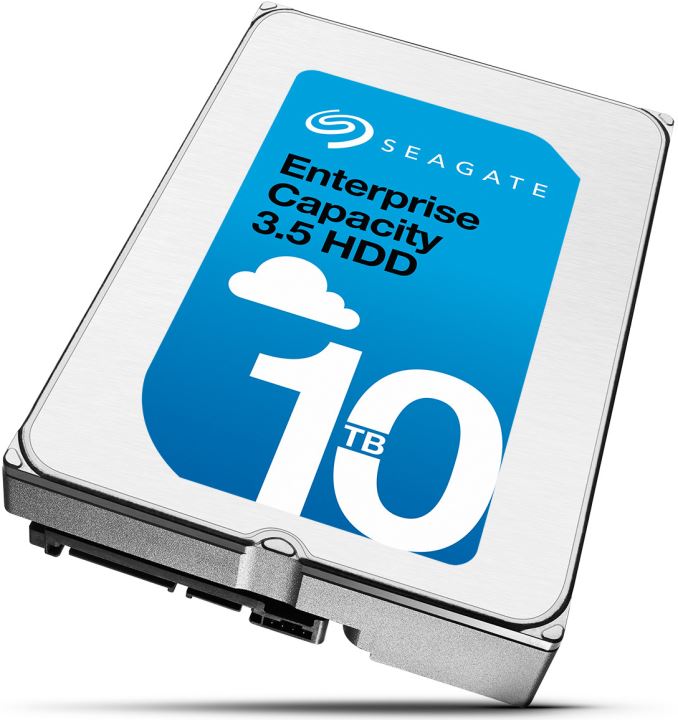

 Quote
Quote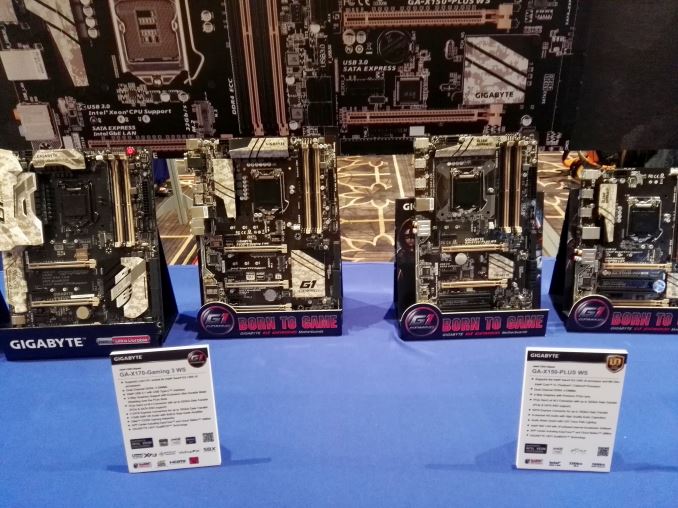
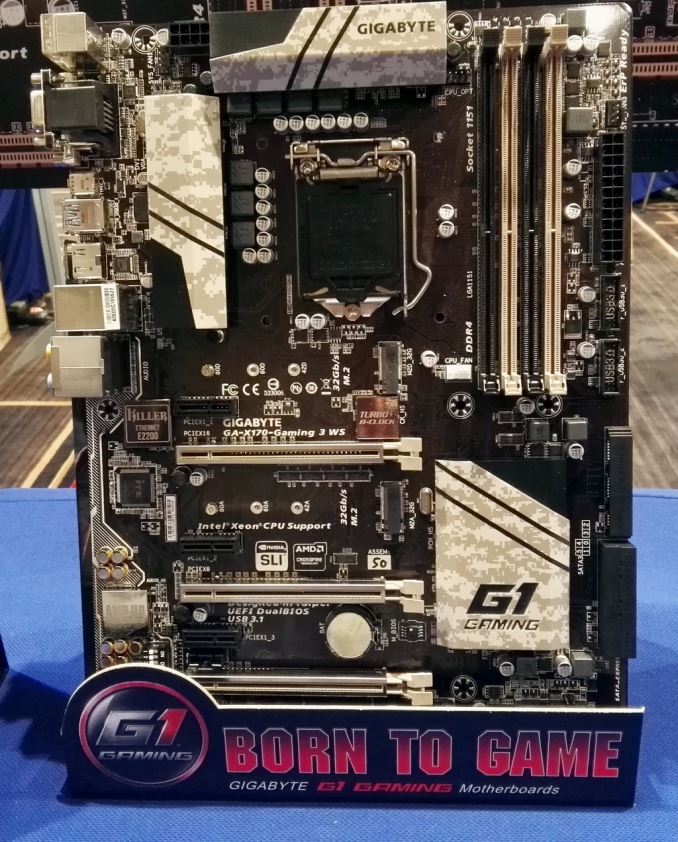
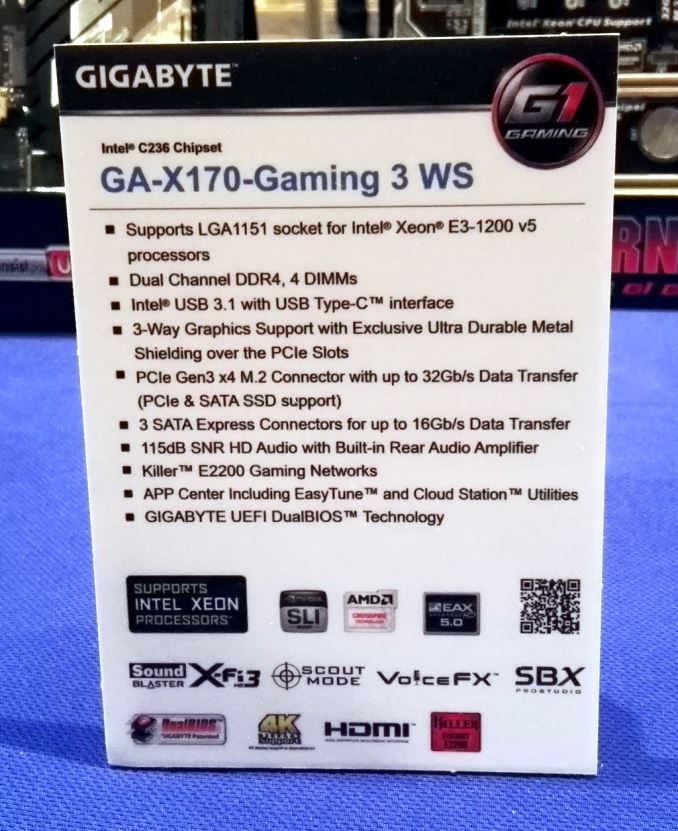
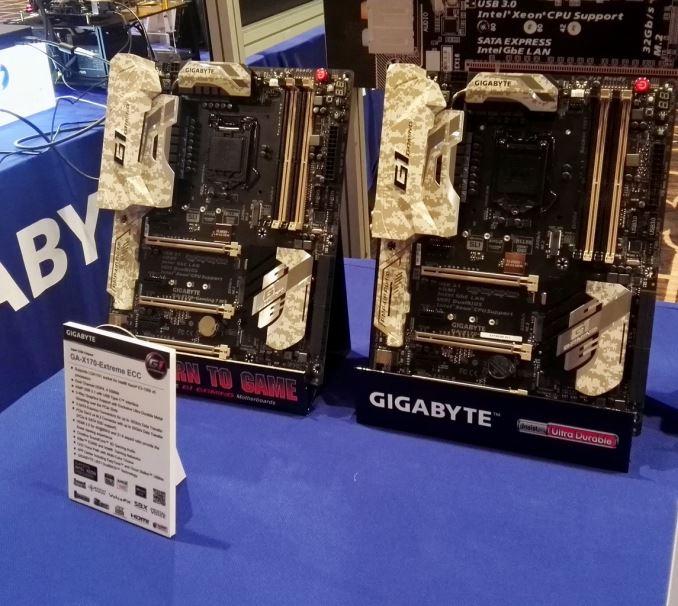
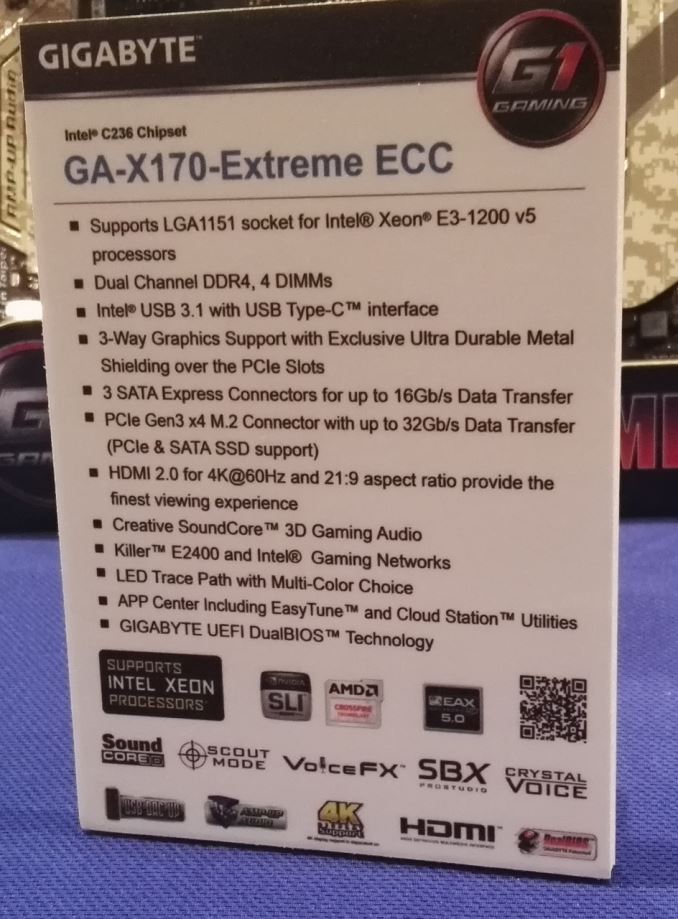
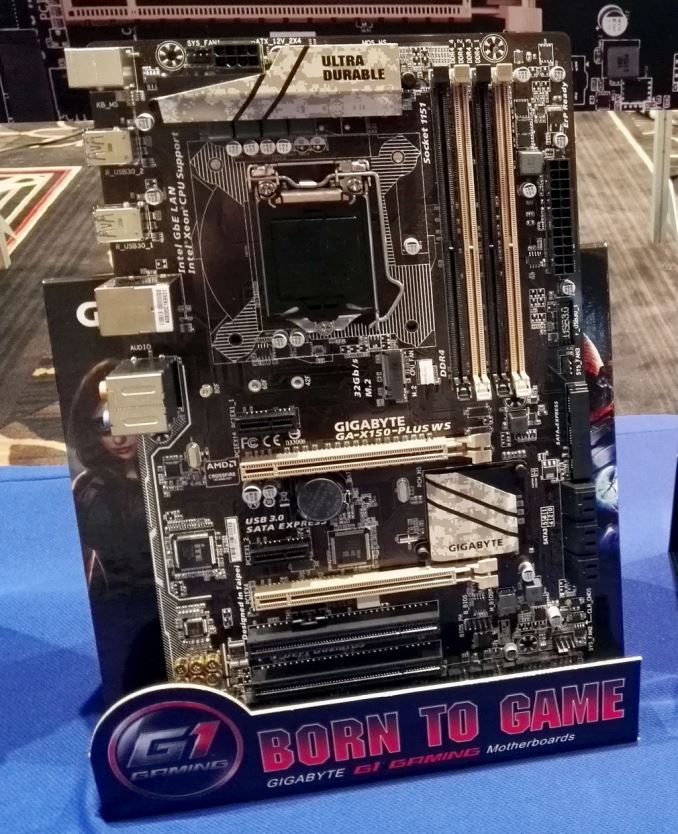
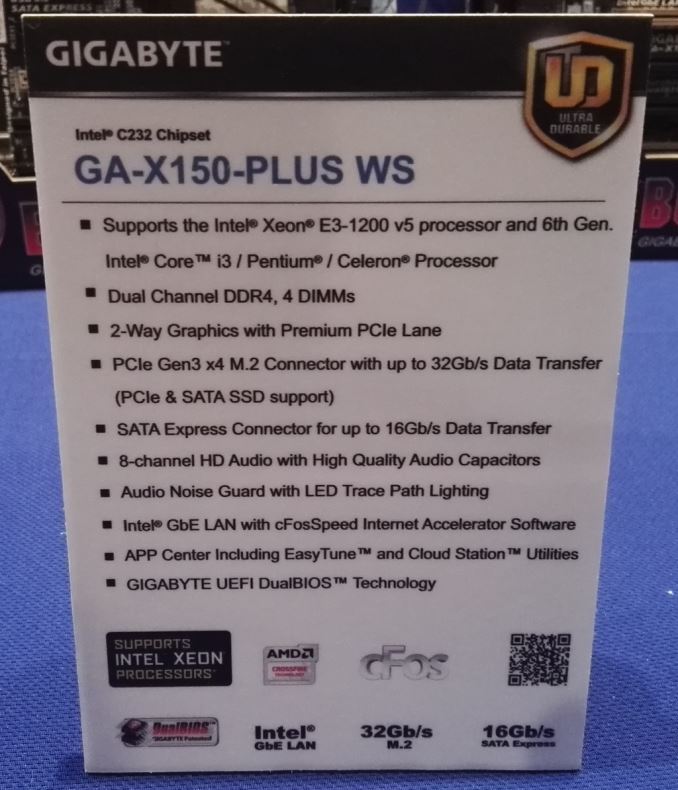
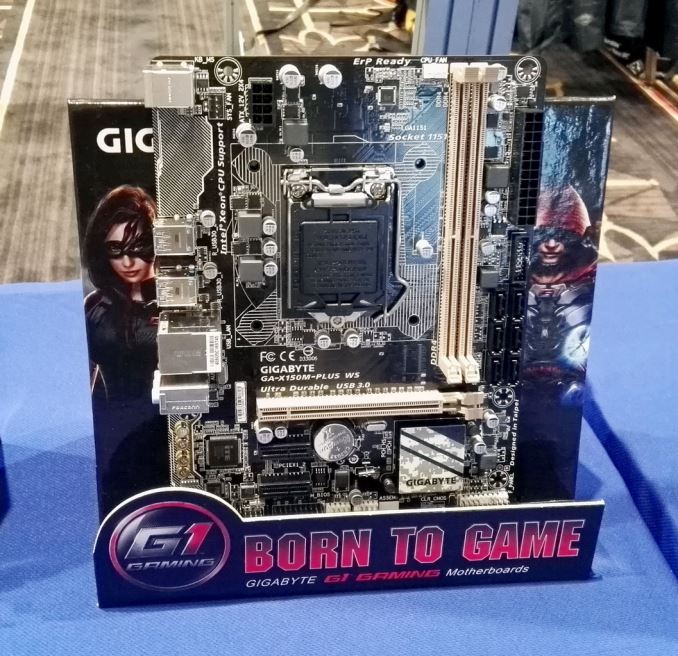
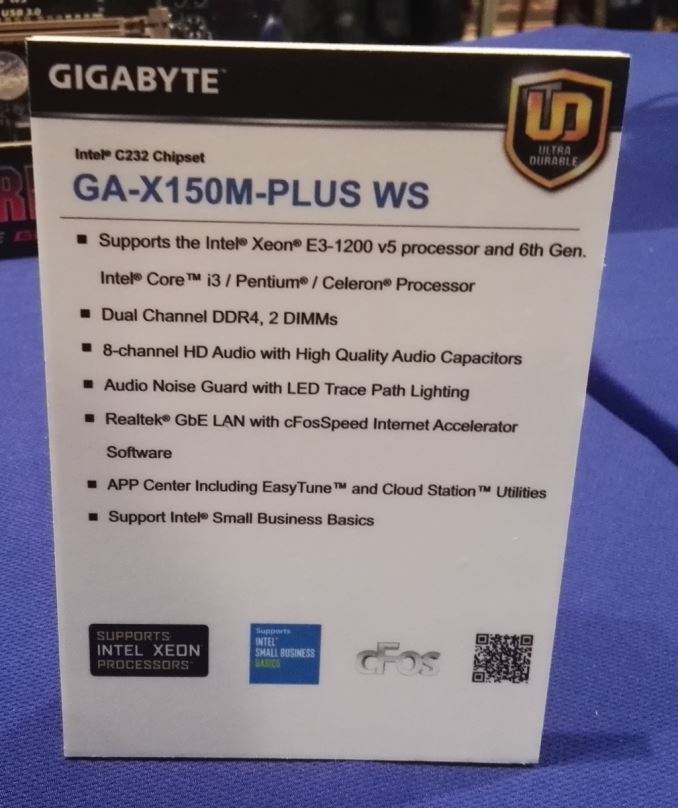
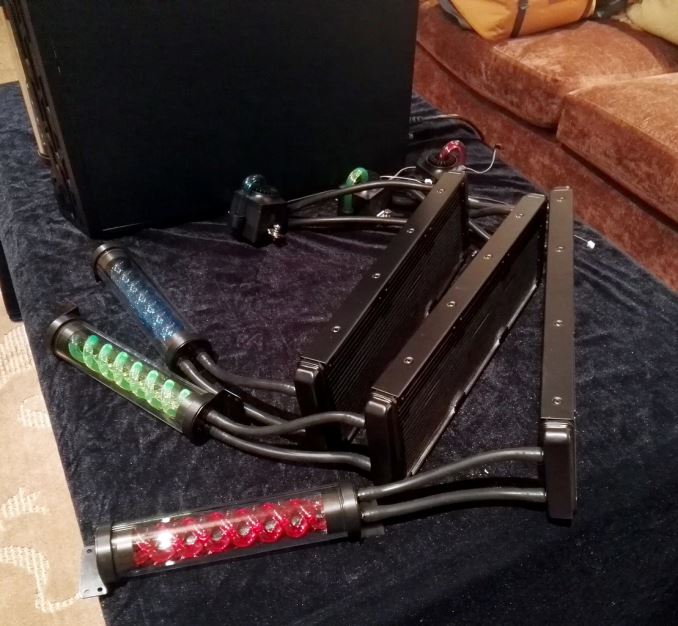
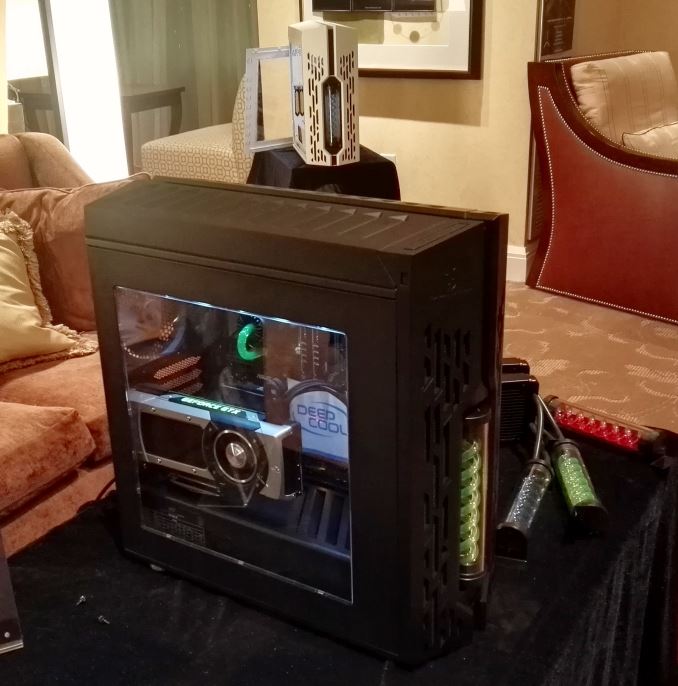
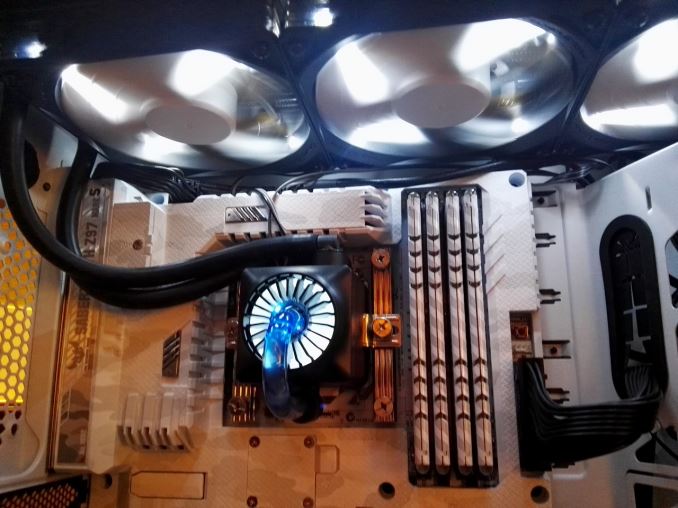
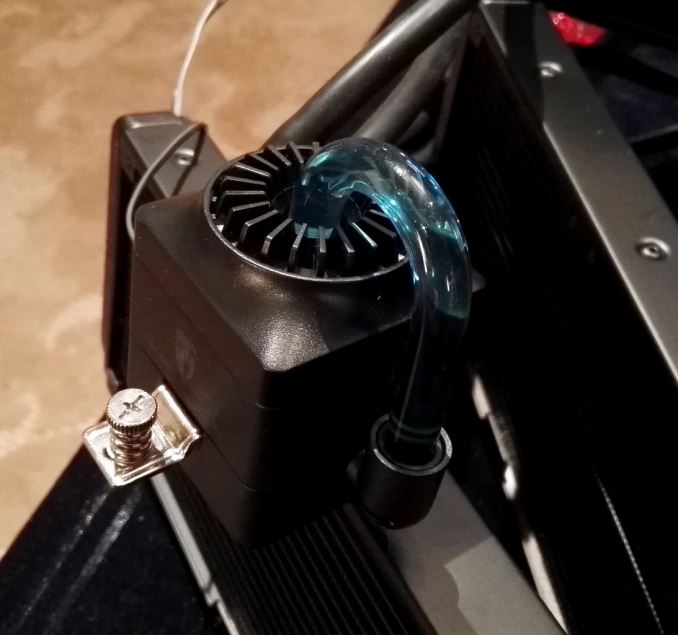

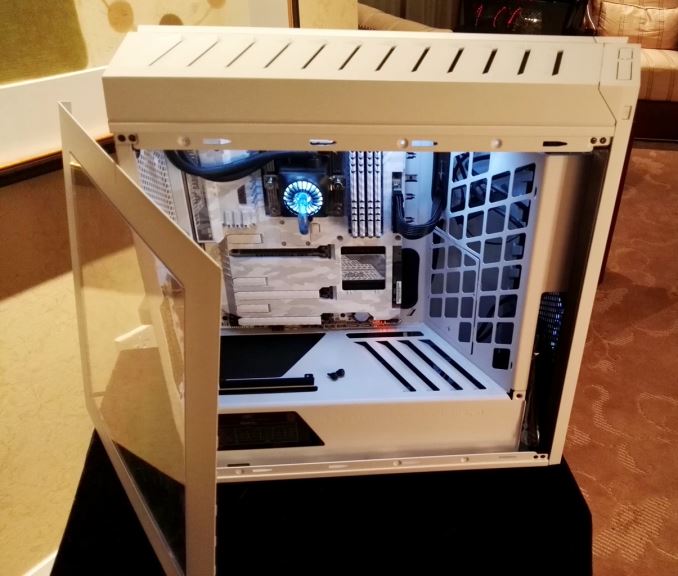





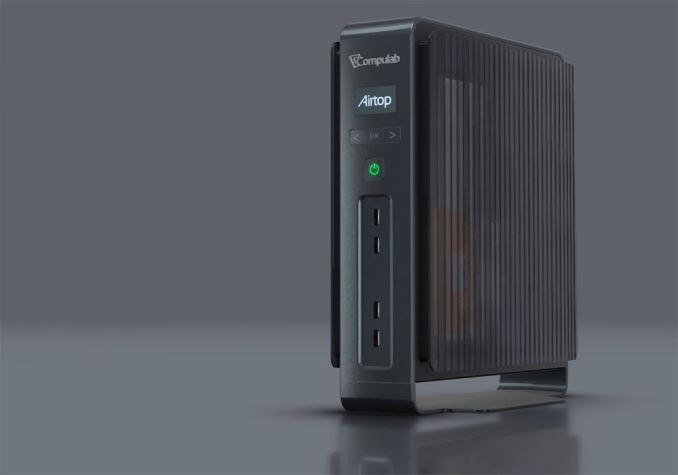
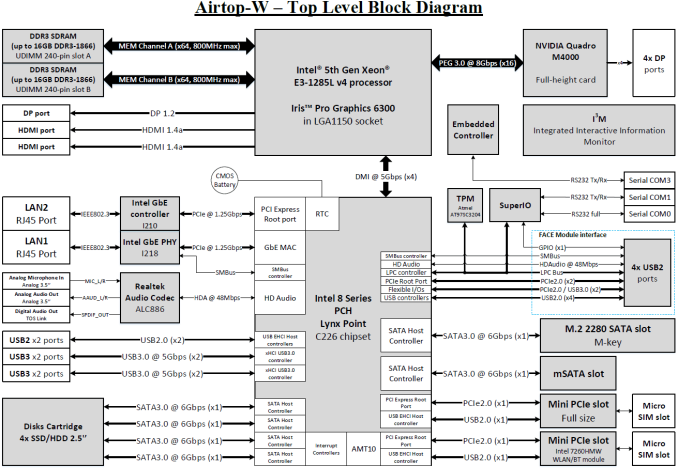
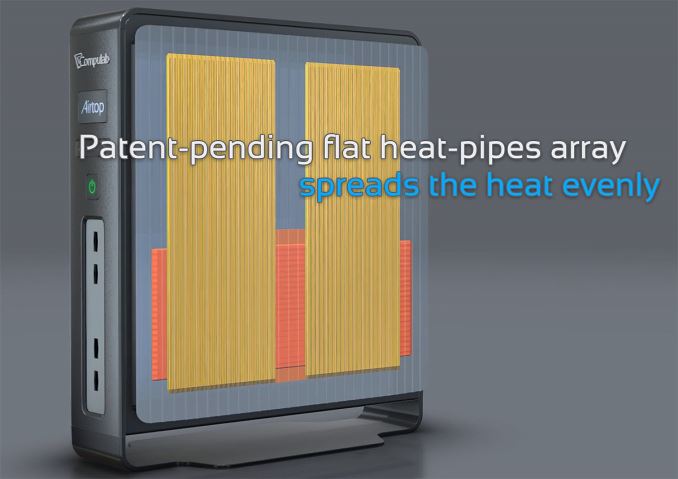
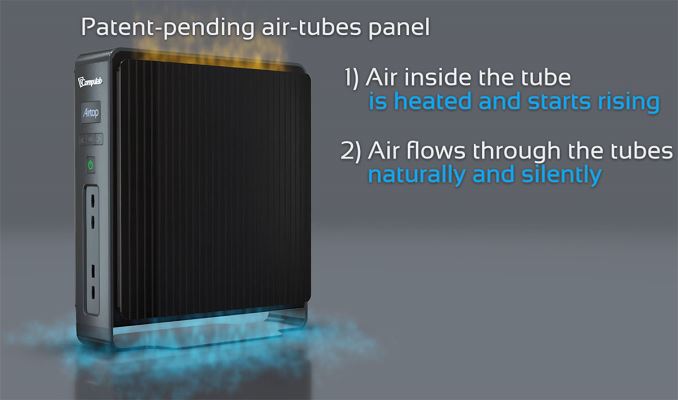
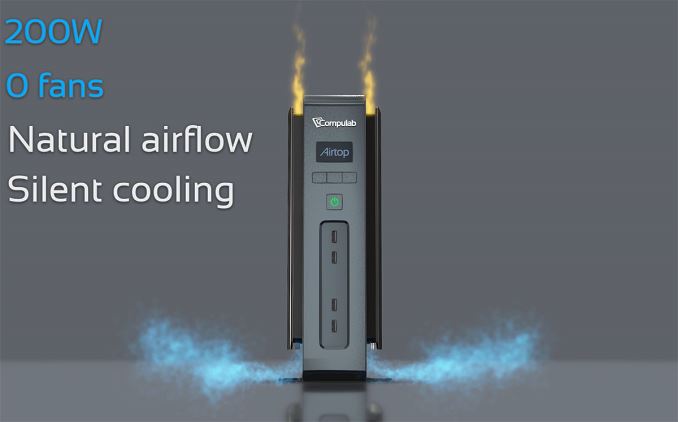
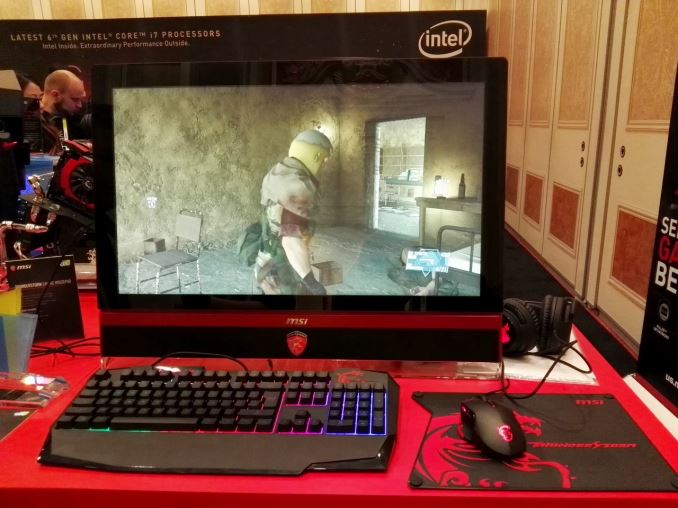

























Bookmarks